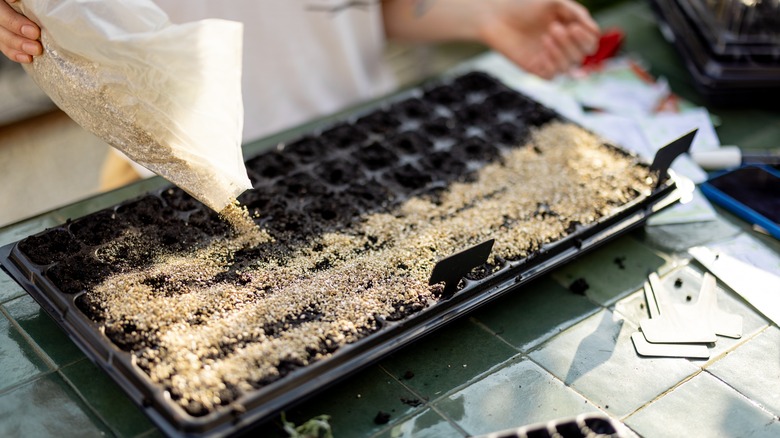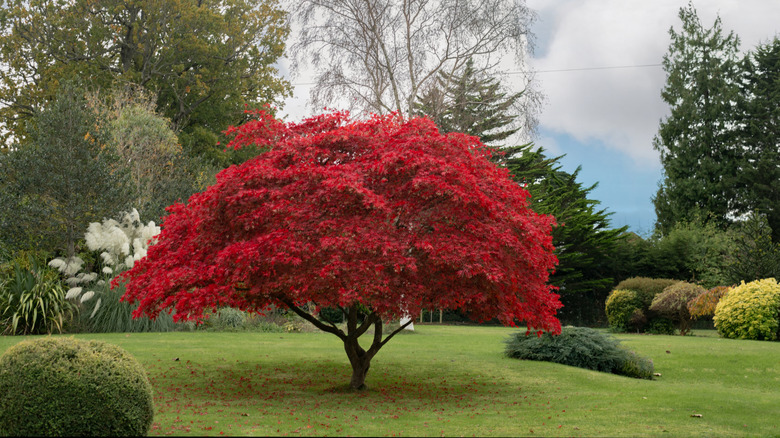The Popular Garden Tree You Had No Idea You Could Propagate
Japanese maple trees (Acer palmatum) are an increasingly common sight in American gardens. People love these trees, which come in many varieties, with different sizes, shapes, leaf colors, and textures. It's no wonder they are so popular, as Japanese maples can even increase the resale value of your home. While these trees may be able to make you money, if you're the kind of enthusiast who needs all the most beautiful varieties of Japanese maple for your yard, your hobby could get expensive. Luckily, you can propagate them.
No, we're not talking about waiting for seedlings to take root and pulling them out of the soil, though that's an option that may be worth trying. Instead, you can use cuttings from your favorite trees to create your own. So if you have a friend or neighbor with a tree you admire, you don't have to hunt down the same variety; just ask for a cutting to make your own. Be warned — growing a tree in this way is going to take a bit of patience, requiring you to keep it in a pot for at least a year.
How to propagate a Japanese maple tree
Start by taking a cutting in early spring, after the first flush of growth. Choose a healthy branch that is about 6 inches long, and cut it using sharp shears. Remove all the leaves except for those at the top. You will likely want to take more than one cutting to improve your chances of success.
Once you have your cuttings, soak the ends in a liquid rooting hormone. Typically, you'll do this for about a minute, but follow the instructions on your particular brand. Now, you're ready to plant your cuttings in your potting medium. Something like vermiculite will work well for this part of the process. Mist your cuttings twice a day, and after three or four weeks, you should see root growth. Once you have strong root growth, you can repot your cutting into a bigger container with potting soil.
In the coming weeks and months, you will need to repot the tree as it grows bigger. So be prepared for that and to possibly overwinter it indoors. Next spring, you should be able to plant your Japanese maple in the ground after the danger of frost has passed. Just make sure you choose the best place to plant your Japanese maple tree.

